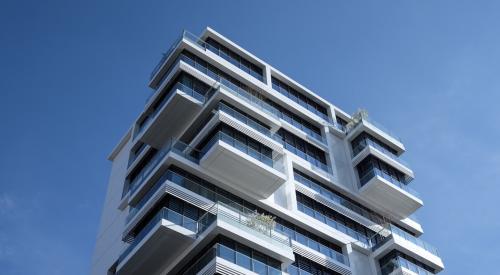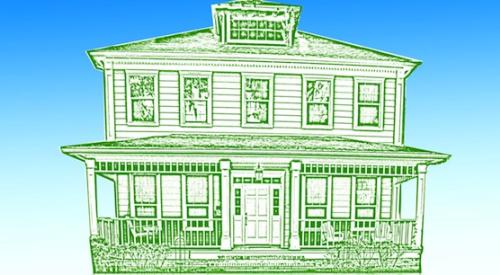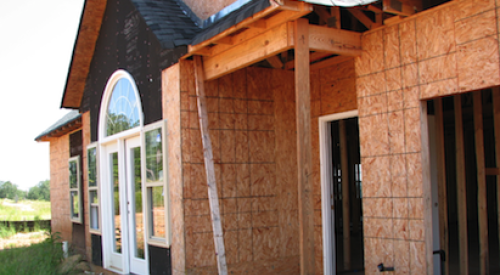|
In many red-hot housing markets, home sales began to slump last fall. It had to happen eventually. The pace of sales — and price escalations — was unsustainably high in many areas of the United States. But now, nervous builders across the country are asking: How long will this slowdown last? How bad will it get?
The answer depends on the characteristics of your local market. On the national level, most economists point to the buoyancy of forces that drive housing demand as indicators this sales slump may be more a price-correction hiccup. (A price correction keeps home shoppers from buying until they feel confident they know a fair price when they see one.)
How bad will it get where you are? Ask this question: What percentage of home sales in your market have been to investors more interested in flipping than moving in?
David Berson, the chief economist at Fannie Mae, sees a ton of statistics cross his desk in Washington, D.C. He says he, and most other analysts, underestimated the impact of investors on housing production over the past two years. That's one reason so many missed low with market forecasts. "Investor buying rose to unsustainable, record levels," he says. "We peg the 2005 investor component at 12 percent of purchase originations."
In hot markets like Sarasota and Naples, Fla., where house prices escalated 30 percent or more each of the last two years, the investor component probably ran closer to 20 percent. But that began to change last fall, and now housing investors are hard to find in Southwest Florida.
"There's potential for significant declines in home building in those markets where investor demand and prices have gone up most, especially in the absence of a lot of permanent in-migration," Berson says. "But you may see continuing strength in markets where prices are not as high or where the price increases are pushed by people moving there to take jobs, like Orlando as opposed to Naples.
"The national economy in the first half of this year will grow at an above-trend pace," he says. "Unemployment is down. Mortgage rates are still low. They're moving up, but not rapidly. Lots of households are being formed. And the age structure of the population is still positive for single-family home demand. All these things prop up the market," Berson reasons, "even as the decline in investment buying takes demand away."
Berson says no one should be surprised sales have slowed. He predicts an eight percent decline in home sales for 2006. "We really don't know yet how severe this market correction will be, but the sales pace we saw in the third quarter of last year, when we had record monthly and quarterly totals, was not sustainable.
"There's a conflict now between the reduction in housing demand caused by investors leaving the market and the underlying strength of traditional demand drivers.
"On both coasts, affordability has fallen sharply in some high-priced markets," Berson says, "so underlying demand may be less there than in the middle of the country, where prices are lower and have not gone up as fast." The most overheated markets were concentrated in Florida, Southern California, Las Vegas, and — to some extent — Arizona, Berson reports.
The Fannie Mae maven is concerned about the trend of new housing inventories, but even there, he finds a silver lining. "The total inventory of new homes for sale set a record in January this year, against data going back to 1963. It's never been higher in more than 40 years. But there are three components to total inventory: (1) houses completed, (2) houses under construction and (3) houses sold, but not yet started.
"If the current inventory were mostly houses completed, we'd be in real trouble," Berson says, "but fortunately, builders have not been doing a lot of purely spec houses.
"The number of completed, but unsold houses is high, but nowhere near a record. The total inventory of houses for sale at the end of January was 536,000 units, but completed houses represented only 118,000 of that total. By contrast, houses under construction but not yet sold stood at 312,000 units. And those sold and permitted, but not started, totaled 107,000."
However, the current situation has similarities to conditions in the early 1990s, Berson warns. "We had another big increase then in investor buying," he says. "Actually less then than now. But the weakness in that housing economy was not just caused by investors pulling out of the market.
"We had a national recession in 1990 and 1991. We don't have a national recession now. That's not to say we won't have one, but it won't be this year," he says. "If it happens, it will be next year."
Share of Confentional Mortgages Represented by Admitted Investors and 2nd Home Buyers (many of whom also have been investors) ballooned above 20 percent last fall (left), driving home prices to unsustainable levels (right), well above disposable income. Now that investors are gone from many previously overheated markets, the question remins: will a price correction bring buyers back within months, or are we in for a year-long slump in housing sales? |
|














